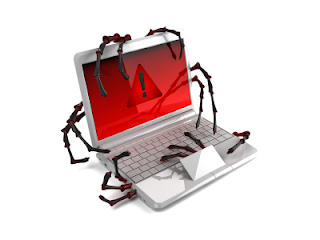Malware is short for “Malicious Software”. It is software
that without your knowing, gets on to your computer and runs to perform
“malicious actions” to your data, software and surrounding environment (other
computers on the network). Malware comes in a variety of shapes and sizes
including code, scripts, active content and much more. More specifically,
these instances can take the shape of viruses, ransomware, worms, trojan
horses, rootkits, etc. Worms and trojans makeup most of the malware out
there today. Viruses are not that prevalent, although you may think so,
given how many times a day you hear about them.
Why I should protect against malware?
This may be an obvious question, but let’s look at some details
of what might result from a malware attack anyway. The damage caused by
malware can increase outgoing traffic that affects the response time of your
computer to tasks you are trying to accomplish and/or submitting your sensitive
data to the computer of a hacker for later use, such as on a shopping spree
with your credit card. I’m sure you don’t want to wait any longer than
you have to for your favorite app to load or download to complete. On the
nastier end of the scale, the right malware on your system can cause loss of
very important data as well as a complete shutdown of the network. Would
you want to be the poor soul that allowed a virus to intrude on your company
network, shut down operations for hours or even possibly days at an expense of
millions lost in revenue for the business? IT departments do have the
technology to determine where malicious software entered their environment.
How to protect against Malware:
 The foremost and easiest means of protecting against malware is
to never run anything you are not sure where it came from or what it
does. The most common means of malware introduction is through the
internet in the form of an email or web-site link. You may receive an
email from what appears to be the name of a trusted friend with a link in the
email that they recommend you see. The problem with that email is that
the actual email address itself (not the alias “from” text) is not your friends
and in fact is probably not even a real email address (the attacker wouldn’t
want you to be able to attack back). Clicking on the link will start off
whatever kind of intrusion the “bad person” has planned.
The foremost and easiest means of protecting against malware is
to never run anything you are not sure where it came from or what it
does. The most common means of malware introduction is through the
internet in the form of an email or web-site link. You may receive an
email from what appears to be the name of a trusted friend with a link in the
email that they recommend you see. The problem with that email is that
the actual email address itself (not the alias “from” text) is not your friends
and in fact is probably not even a real email address (the attacker wouldn’t
want you to be able to attack back). Clicking on the link will start off
whatever kind of intrusion the “bad person” has planned.
While surfing the web one Sunday morning in your favorite robe
and hot steaming cup of Joe, you may see a link to something that promises to
provide something you have been hoping to achieve for quite some time.
Something so appealing you cannot help but click the link to find out what it
is all about. You may be brought to a site that discusses your next
“ultimate” vacation, but you soon realize that there isn’t much to it and it
doesn’t give any means of getting there. That’s because it’s not
real. The intention of the creator of the site is to install/run
malicious software on your computer when you click the link. The actual
attack will probably also be delayed so you won’t be able to associate it with
the link you just clicked.
Of course you can also be pro-active and purchase software that
detects when malware is being installed or has already been installed.
The bigger players in this arena are Norton and McAfee. This link discusses even more software to help
protect against malware intrusion:
previous article
Newer Post

.jpg)




No comments
Post a Comment